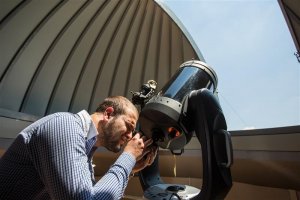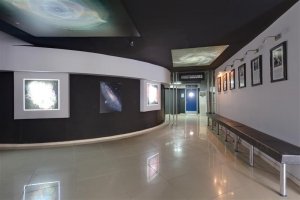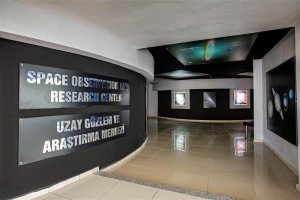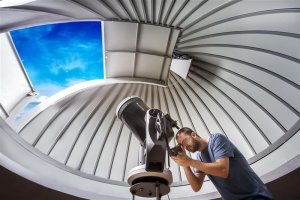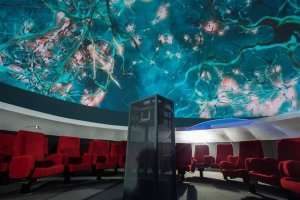Space Observation Application and Research Center
Planetarium
Cag University Planetarium
The newest of such show rooms in Turkey, the "Çağ Planetarium" is also the first among private universities. Part of the complex is the Space Observation and Research Center. An observatory with a 28cm optical telescope is also included in the Space Center of the University. The observatory is also in use by students for the Space and Astronomy Club activities.
What is a planetarium?
Nowadays, most of us are largely cut off from the sky because of the effects of urban life. Only very few of us occasionally raise their heads and look at the night sky. Our lives mostly lie between the walls of our home or our workplace. Further, in the large cities, we can only see very few stars in the sky. When we have a holiday away from a large city in a village or sparely-populated area, we then remember the beauty of the sky.
Probably, "Planetarium" is not a familiar concept to most of us in Turkey. Because not many planetaria exit in our country yet.. We can translate the word "planetarium" as a "gezegenevi", “gökevi” or ‘yıldızevi’. However, it is actually a "theater of the sky, in the sky", therefore, “yıldız tiyatrosu” (a "star theater") “gökyüzü tiyatrosu” (a sky theater), or “uzay tiyatrosu” (a "space theater") are also used.
We can think of sky theaters as the properly-designed rooms to show the audience the celestial bodies and their movements, in real time or accelerated/decelarated speeds. The most important feature of a “Space Theater” that separate it from a traditional cinema or a theater hall is, their dome-shaped, semi-spherical ceilings.
The real-time sky can be reflected to this semi-spherical screen above. So, in their seats, the audiance feel themselves like sitting under a real sky. Depending on the scenario being designed, the advantages of the space theaters to the real sky is that it gives space-time journey chances with impressive effects to the audiences. For example, changes in the sky in real time, normally need very long time intervals; in the space theater dome however, they can be performed much more quickly or, sometimes, if needed, very slowly!. This ability puts planetaria at performing invaluable tasks in astronomy education as well as in other sciences amnd topics. Most importantly, space theaters make the visitors part of the show, bringing them much more into the shows than in any other halls or theaters.
Size of planetariums range from a few meters to 30 even to 100m. The largest planetariums can accommodate up to 500 people, while the smallest ones can only accomodate only a few.


